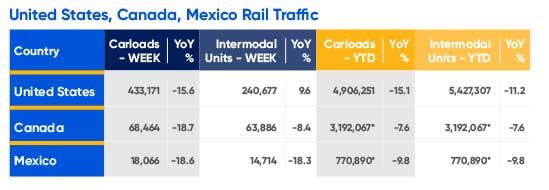The current global pandemic has severely tested the resiliency aspect of supply chains, with delays and disruptions pervasive. Shutdowns in production across multiple industries and many regions have been a feature of much of the past three months, causing companies to rethink how they will deliver products in a reliable and cost-effective manner. In tandem, globalization continues to be under scrutiny, and trade volumes are down markedly, as reflected in port and railroad data. As all of these phenomena collide, COVID-19 could be the catalyst for a complete rethink of supply chains as we know them.
Supply Chains Going Forward
There is now a complete rethink going on about the interdependence between countries and the resiliency vs. cost trade off. While there has not been a complete breakdown in supply chains, the disruptions seen across myriad industries and regions resulted in heightened calls into whether globalization, and the premise behind global trade flows, needed to be rethought. Even before COVID-19, global trade was already being pressured, most notably with a series of tariffs introduced by the Trump administration, but also by technological advancements, moving some companies to question whether long, and often complex, supply chains needed to be replaced. The arrival of a global pandemic only increased the pressure to revisit global trade patterns.
Any reconfiguration of existing supply chains would have a significant impact on North American industrial real estate markets. While the point-of-origin for many imported goods could shift, for example from Asia to Latin America, or Eastern Europe, or even Africa, an equally seismic shift would be for manufacturing to be done on home soil. Returning manufacturing to North America could yield several benefits, including being closer to the end consumer, less risk in the transport of goods, and greater oversight and safety protocols.
Supply chain patterns would look very different if goods were produced domestically than if imported from another part of the world. It should be noted, however, these changes, if they occur, would be over a period of years, if not decades and would vary considerably by industry. By example, auto production is a very complex and highly specialized process, so it is doubtful that it would be altered in any meaningful way. Apparel, on the other hand, could be more easily shifted to another country or, indeed, produced domestically.
